Louis is my “goto” analyst on Australian Property! You can ask a question live via the YouTube Chat…
Its Edwin’s Monday Evening Property Rant!
I chat with Edwin Almeida, our property insider about auctions, sales volumes, price fixing and other matters.
https://www.ribbonproperty.com.au/
Go to the Walk The World Universe at https://walktheworld.com.au/
Global Bond Markets Are In Crisis
Economist John Adams and Analyst Martin North parse the latest events in the Bond market, and Central Banks’ responses. What does this say about the prospects for inflation, stagflation or deflation?
Go to the Walk The World Universe at https://walktheworld.com.au/
The Philosophy Of Property Auctions
We explore the “animal spirits” exhibited during an auction, and research which suggest some will end up regretting paying more than they intended.
Go to the Walk The World Universe at https://walktheworld.com.au/
Is It Time To Go Into Reverse? – With Steve Mickenbecker
I discuss the thorny subject of reverse mortgages with Canstar’s Steve Mickenbecker.
This is a type of loan often used in retirement as a way for people to access the equity in their home. The loan amount depends on your age, the value of the home and how it is taken (lump sum, regular payments or draw down as needed). Interest is added to the loan and compounds. It is not straight forward.
https://www.canstar.com.au/team-members/steve-mickenbecker/
Go to the Walk The World Universe at https://walktheworld.com.au/
Its More Than Just The Number Of Jobs…
We discuss what economic policy should be ahead, bearing in mind the current bond market tussle and the question of employment trends.
Go to the Walk The World Universe at https://walktheworld.com.au/
Volatility Rules! – The DFA Daily 6th March 2021
The latest edition of our finance and property news digest with a distinctively Australian flavour.
Go to the Walk The World Universe at https://walktheworld.com.au/
Mayhem Rules! – With Tarric Brooker
My latest Friday afternoon chat with Journalist Tarric Brooker, who is @AvidCommentator on Twitter.
Go to the Walk The World Universe at https://walktheworld.com.au/
Mortgage Stress Higher In February 2021
Well, against expectations – based on the main thrust of economic news (and spin), some may find it surprising to learn that our latest household surveys detected a RISE in Mortgage stress in February, based on our 52,000 or 0.5% rolling sample.
Remember that we are measuring free cash flow, and a range of factors have driven the rate higher. First, people are spending harder now, and draining their savings (some built large buffers last year). Second the number of people on principal and interest rate holidays from the banks has fallen as they restart some (any) sort of repayments, (which of course resets the default “timer”, conveniently). Third, more are weaning off JobKeeper, and payment rates on JobSeeker are dropping as the extra support is withdrawn. Finally, some have negotiated new loans, at lower rates, but others are not successful in this, due to credit history, or taking a larger loan. Support ends at the end of March, so expect to see more of this ahead.
And the snap lock-downs had a big impact on some incomes, which are growing only slowly, if at all.
It is worth remembering that some new loans are being made at up to eight times income – this is a very high multiple even in the current low rate environment. And rates may not be as low for as long as many currently expect!
Thus overall mortgage stress rose from around 39% last month to more than 41% this month.
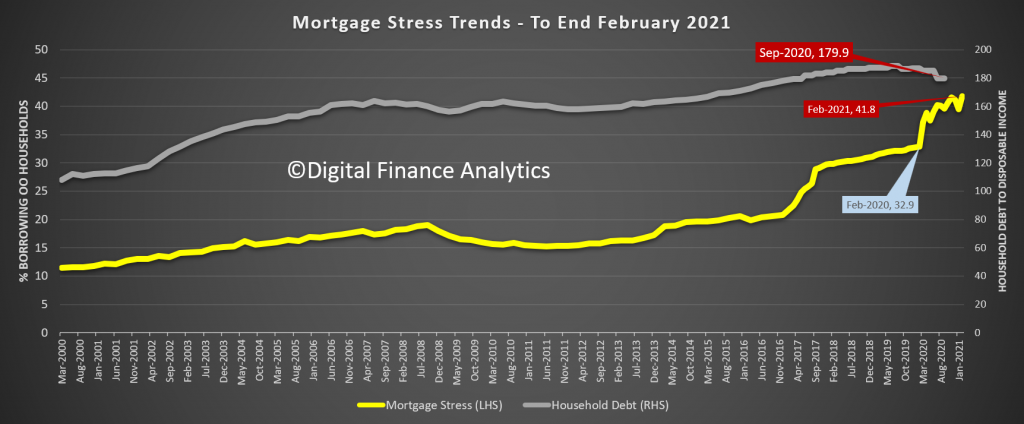
Across the country, more than 1.5 million mortgage holders have cash flow issues, this is 41.8% of borrowers. Tasmania and NT had the highest proportion of households exposed, and Victoria rose to 45.4% in response to the recent lock-down.
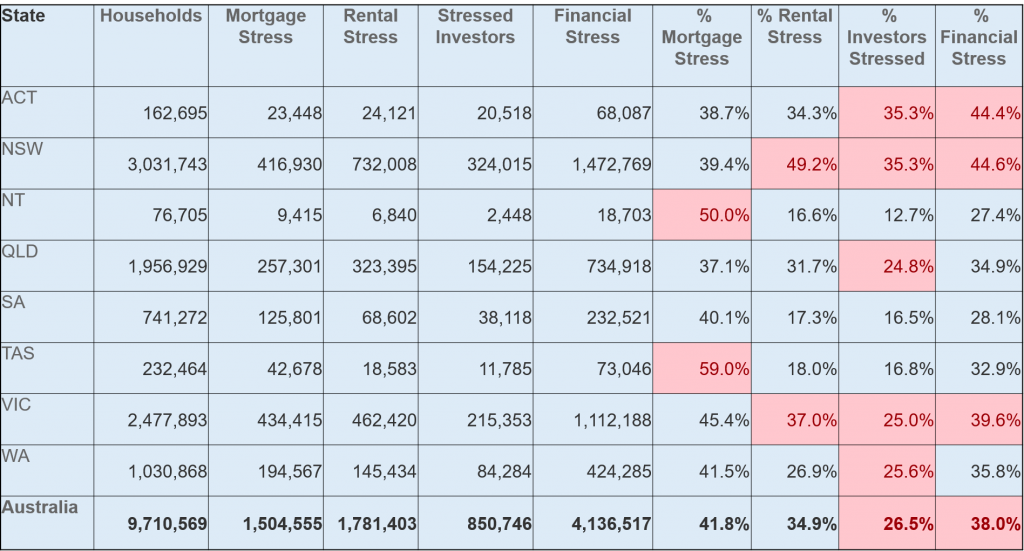
We also measure rental stress, which is 34.9% of renters, investment property stress at 26.5%, and overall aggregate financial stress at 38%. In total around 4 million households are being crunched in some way.
Across the segments, young growing families, and those on the urban fringe are most exposed (this includes many recent first time buyers), while more affluent households are also caught, thanks often to multiple investment properties.
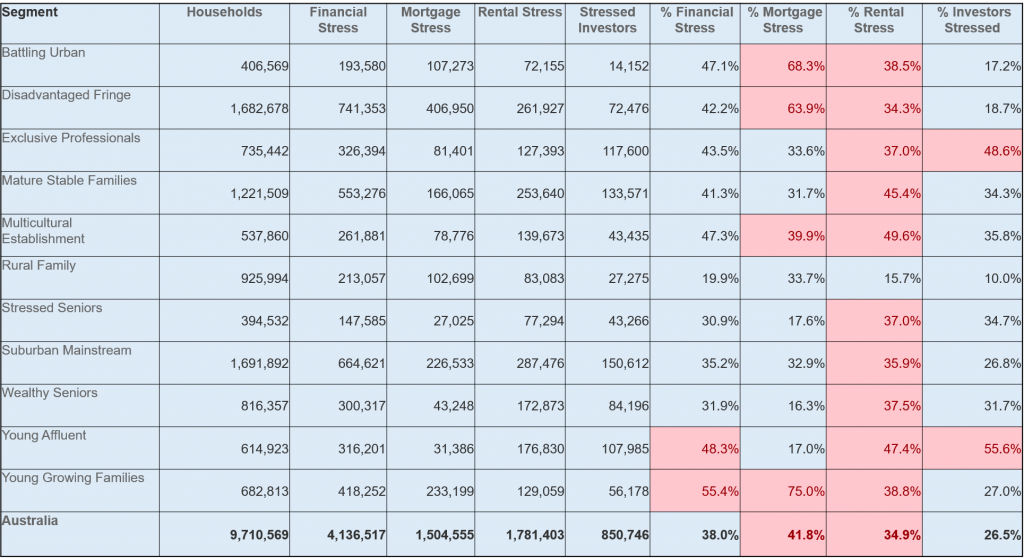
We can identify the top post codes for our four stress types, sorted by the number of households exposed. We see the same post codes appearing in multiple lists. There was a significant rise in the high growth areas around Melbourne, as well as Toowoomba in Queensland, and areas of New South Wales.
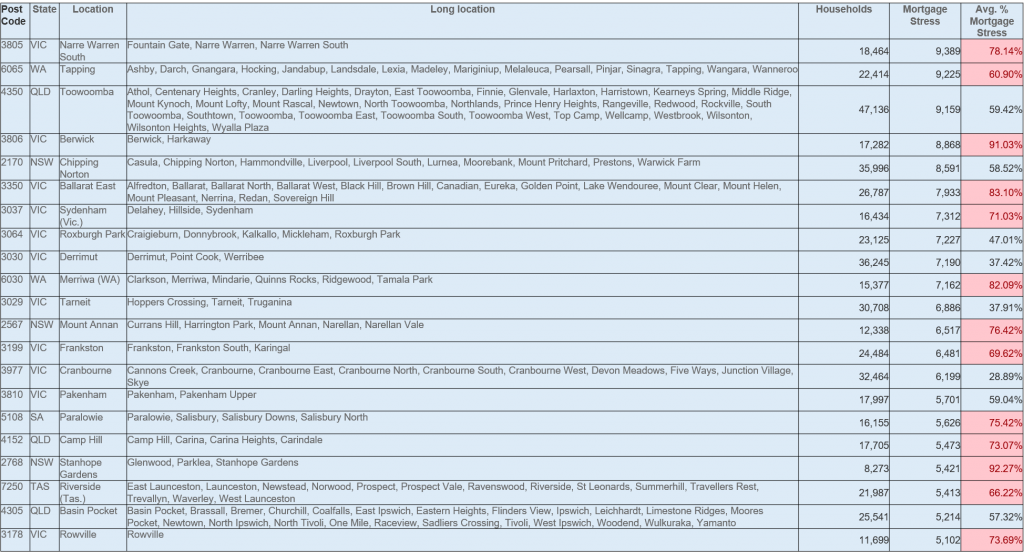
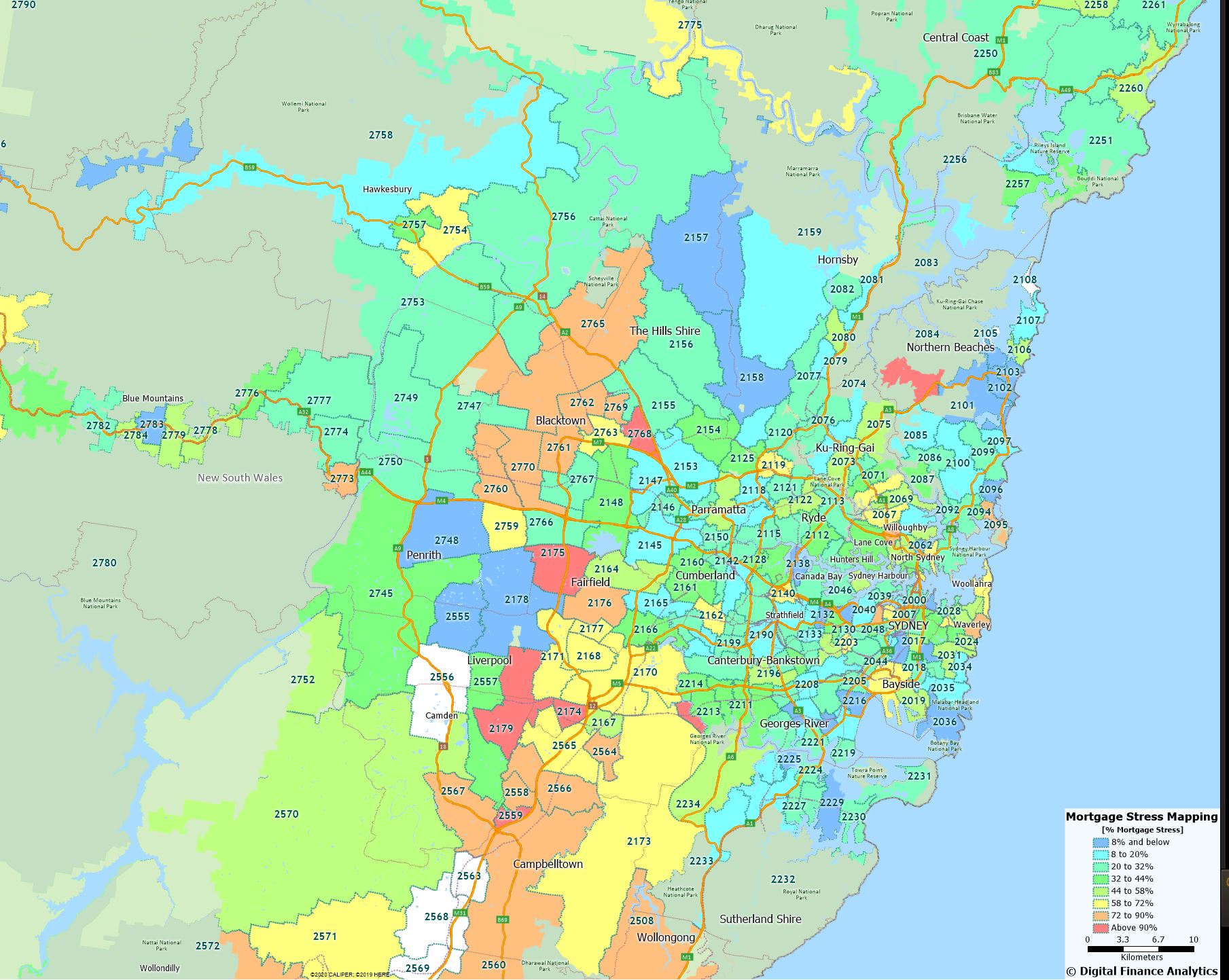
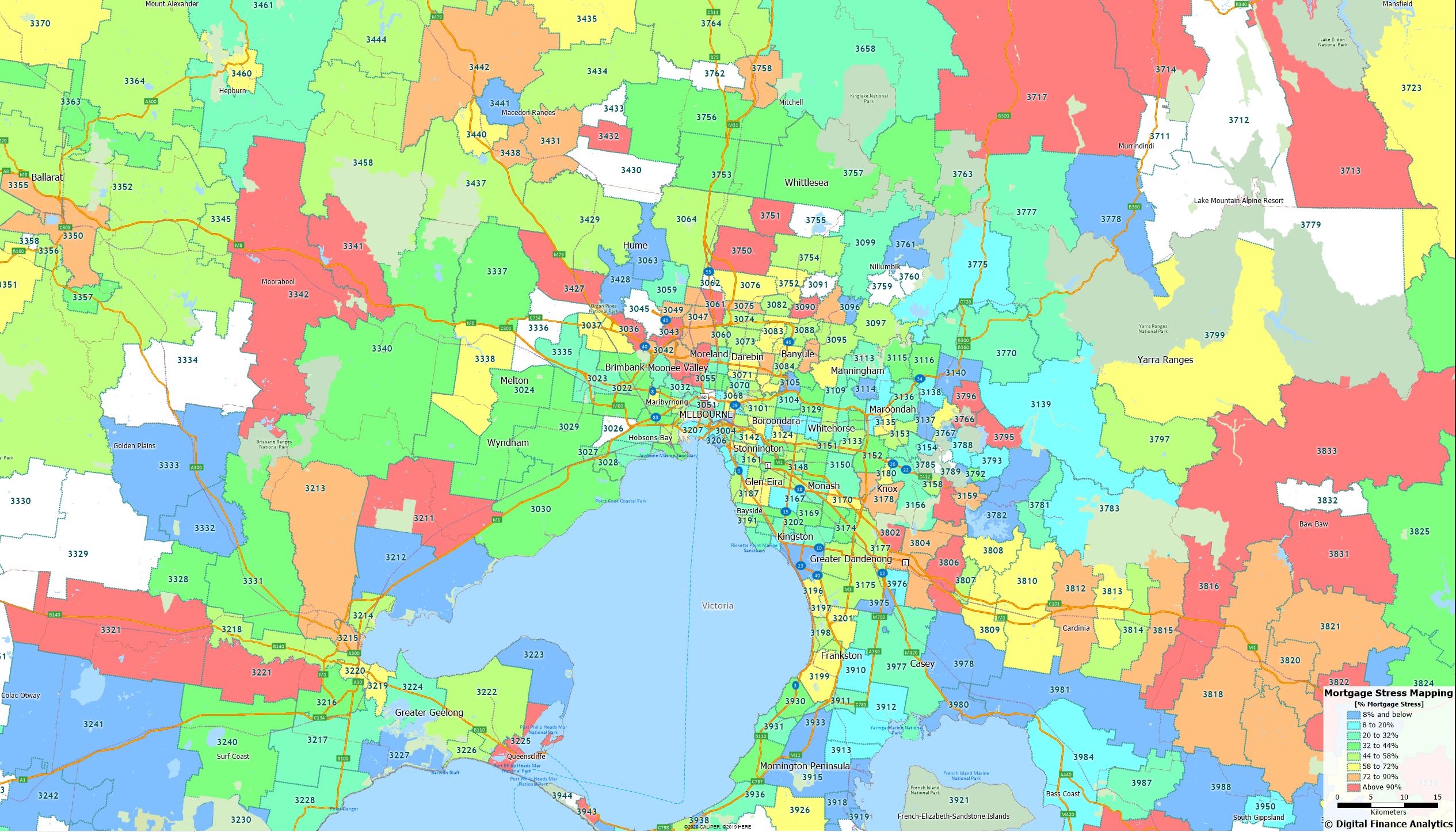
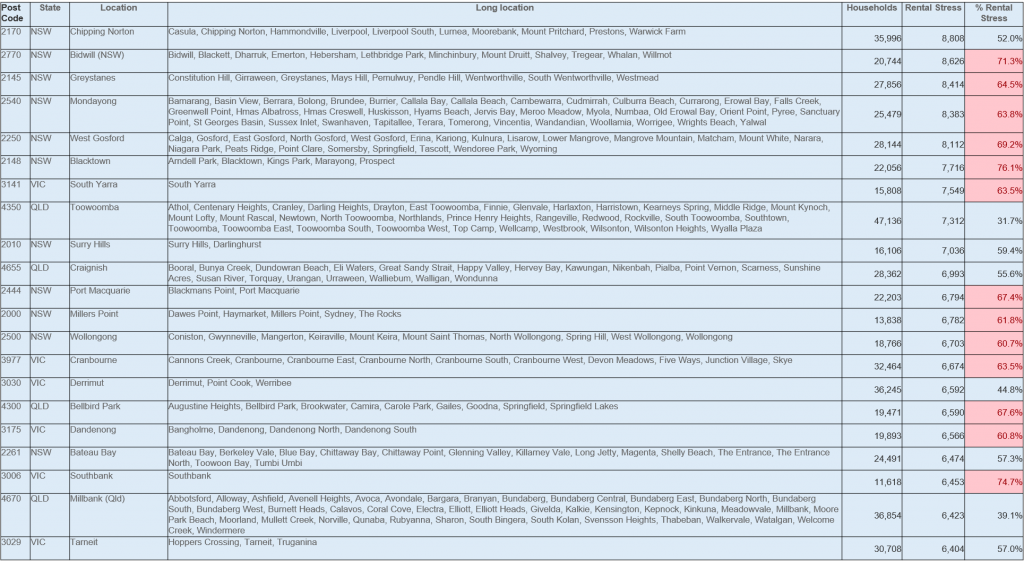
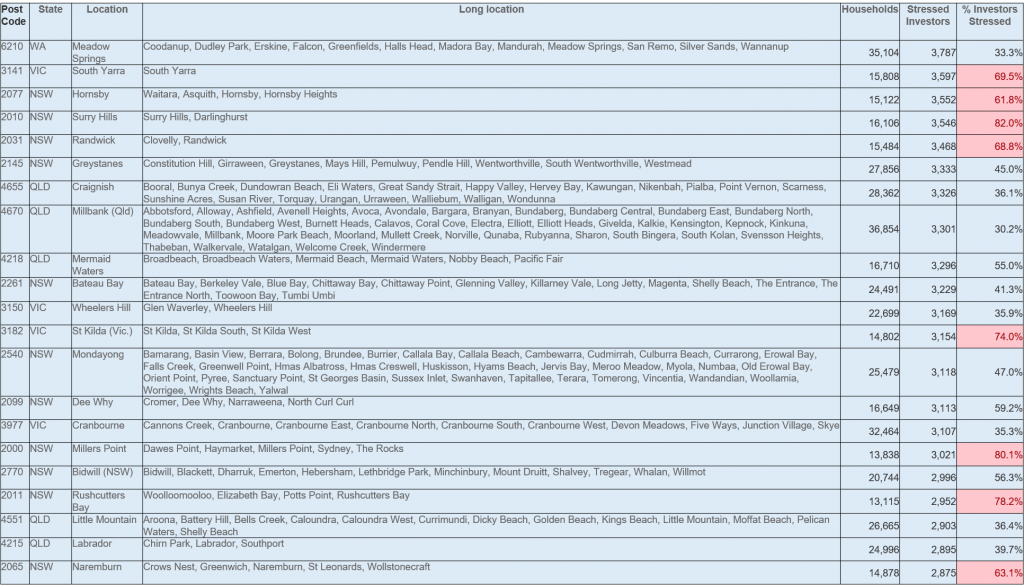
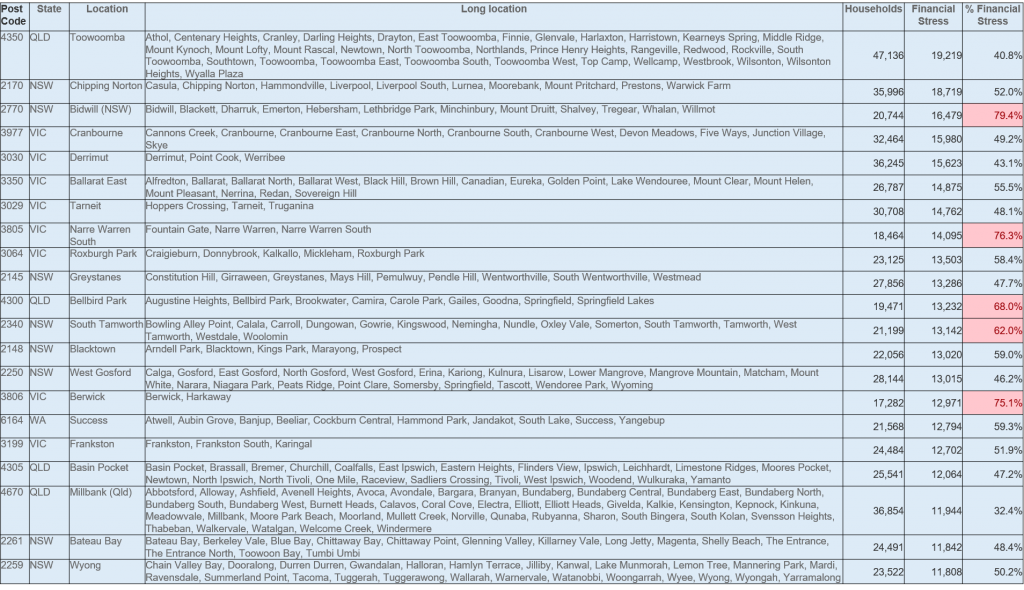
Underlying our modelling are our scenarios, which we have updated with the latest economic data inputs. There is a greater probability of home price rises, especially in some smaller states, and in the house, not high-rise unit segment.

And we discussed this analysis, together with the stress maps which accompany it in our recent live show.
Whilst some are falling over themselves to get into the market, we remain cautious, given the potential rise in stress, mortgage rates, and the tapering of Government support.
V Is For V-Shaped
The latest edition of our finance and property news digest with a distinctively Australian flavour.
Go to the Walk The World Universe at https://walktheworld.com.au/
